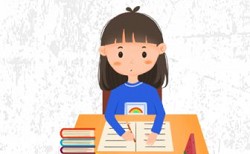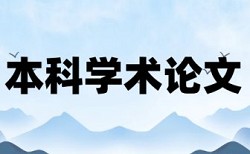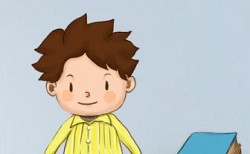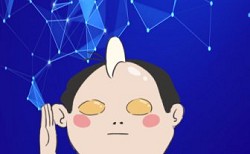简介:该文是关于科普类论文怎么写和昆虫有关论文范文数据库.

Insects he an important role as part of the biosphere—the living planet—and they make up four-fifths of all animal species. But what difference do they make to our lives?
Insects can be both a problem, and an opportunity!
Insects as a problem
Many insect species compete with us for food. Many of these he been encouraged due to human activities, but then they become a problem. We plant crops which some insect species love, they thrive on them—and that’s when we start to call them pests.
Humans he caused some insect species to be moved from one part of the world to another—deliberately or by accident. The Large White butterfly is an example of a butterfly which was introduced to the USA and is now a pest on cabbages there.
Another example is the European Corn Borer, Ostrinia nubilalis, a Pyralid moth which is an important pest of corn in the Midwest of the USA. The species was introduced there from Europe in the early 20th century and now costs US farmers over a billion dollars a year.
If the introduced insect species has no natural enemies in their new home, they can become a real problem. A recent UK example is the Harlequin ladybird (Harmonia axyridis), which has found its way to Britain and eats other ladybirds. In other countries where it has been deliberately introduced to control insect pests (a process called Biological Control) it has become a real problem, threatening to wipe out many native insects.
Some insects can sting, bite, or tranit disease to humans. Sometimes this is because they find us tasty—mosquitoes for example gain nourishment by sucking blood, and in the process they can tranit diseases, such as malaria—which is caused by the protozoan Plaodium falciparum being tranitted in the saliva of the Anopheles mosquito.
The flea Chenopsylla cheopsis had a profound effect on human history when it trelled from Africa in the ships of the middle ages, spreading the Black Death (also known as the Bubonic Plague) across Europe. It took four hundred years for the European population to recover from the effects of the Black Death. The illness is now known to be caused by the bacterium Yersinia pestis, which was carried by the flea, which in turn was carried by the black rat on ships.
So, when it comes to insects, it’s important to understand the consequences of human actions.
Many pests—such as the Colorado Beetle or the Gypsy Moth—can be controlled by spraying with chemical pesticides, which kill most insect species on the crop. But—would you rather eat perfect food sprayed with chemicals, or food where the pests are controlled by more natural means?
Insects as an opportunity
Insects are very important as pollinators. Bees are perhaps the best example of this. Honey Bees aren’t bred in captivity just for the honey they produce—they are vital to pollinate crops. Without them, many crops would fail, as pollination is needed before many crops and fruits that we eat can be formed.
Not to mention that tiny midge that pollinates the cocoa plant. Without it, there would be no chocolate!
Other examples of useful insects are the Silkworm Moth, Bombyx mori, from which silk is obtained. This species has been reared by humans for such a long time that it has become domesticated—it would be unlikely to survive in the wild if released today.
Insects are also useful as models in scientific research. The Fruit Fly, Drosophila melanogaster, is a good example. It breeds rapidly, and can produce very many generations per year in the laboratory, so it is ideal for the study of genetics and evolution. In fact, many genetic discoveries of great importance to medicine he been made using this little fruit fly.
Insects can be useful to the gardener too—ladybirds, for example, are the gardener’s friend because they eat aphids. Hoverflies and wasps also prey on other insects in the garden. These species are called predators. Others that are natural enemies to garden pests include parasitoids, which lay eggs in the host insect so as to provide food for its developing young.
Many kinds of insects are also food for songbirds and other birds and animals. When there aren’t enough insects around, the result is fewer birds and mammals.
And insects can also be eaten by man! This is called entomophagia.
昆蟲,作为生物圈这个地球大家庭的成员,作用不容小觑,而其种群数量占全部动物物种的4/5.昆虫对人类的生活又有何影响呢?
它们既可能是麻烦,也可能是机遇!
昆虫是麻烦
许多昆虫物种和人类争夺食物.这些争食行为很多是受到人类活动的刺激,但后来变成了麻烦.我们播种的作物受到某些昆虫物种喜爱,它们靠这些作物发展壮大——于是我们开始称其为害虫.
人类有意或无意地使得一些昆虫物种在地球上迁移.大蝶就是一例,这种蝴蝶引入美国后,如今成了破坏甘蓝的害虫.
再举一例,欧洲玉米螟(拉丁学名Ostrinia nubilalis),一种螟蛾,是美国中西部危害玉米的一大害虫.此物种20世纪初自欧洲引入美国,现今每年给美国农民造成的损失超过10亿美元.
如果引入的昆虫物种在新的生息地没有天敌,则可能成为真正的麻烦.有一例近来发生在英国的虫害,一种俗称小丑瓢虫(拉丁学名 Harmonia axyridis)的昆虫进入英国后,噬食其他种类的瓢虫.其他国家专门引进这种小丑瓢虫,本是为了控制病虫害(一种生物防治法),结果却成了实实在在的问题,本土的很多昆虫因此面临着灭绝的威胁.
有些昆虫可能蛰人、叮人或传播疾病给人类.它们这么做有时是因为觉得人类对其口味,比如,蚊子通过吸食血液摄取营养,在此过程中,它们可能传播疾病,如疟疾——单细胞生物恶性疟原虫引起的疾病,就是通过按蚊的唾液传播的.
中世纪时,印鼠客蚤乘船从非洲出发,将黑死病(又称腺鼠疫)传遍了欧洲,对人类历史产生了深远的影响.黑死病杀伤力巨大,后经400年之久,欧洲人口才达到疫前水平.现在人们知道,黑死病由耶尔森氏鼠疫杆菌引起,这种细菌由跳蚤传播,而这种跳蚤的宿主则是船上的黑鼠.
因此,谈及昆虫时,了解人类行为可能产生的种种后果至为重要.
很多害虫——比如科罗拉多甲虫或者舞毒蛾——可以通过喷洒化学杀虫剂得到控制,作物上的大多数昆虫也会被杀死.那么,你是愿意吃喷洒过化学杀虫剂的完美无虫食物,还是愿意吃通过更自然手段使虫害得到控制的食物呢?
昆虫是机遇
昆虫是重要的传粉媒介,其中,蜜蜂是最好的例子.人工养殖产蜜蜜蜂,不仅在于它们产出蜂蜜——更因它们在作物授粉方面发挥着关键作用.没有它们,许多作物将结不出果实,因为我们所吃的粮食和水果在长成之前必先经过授粉.
更别提小小的摇蚊了,它会为可可树授粉.没有它,就不会有巧克力!
其他益虫,如拉丁学名为Bombyx mori的家蚕,蚕丝即取自它们.蚕长久以来为人类饲养,已经驯化——如今若将它们放归自然,它们将无法在野外生存.
昆虫还可用作科学研究的样本.拉丁学名为Drosophila melanogaster的黑腹果蝇就是很好的例证.这种昆虫繁殖极快,每年在实验室中能繁衍数代,所以对遗传学和进化研究来说再理想不过.事实上,许多对医学有重大意义的基因发现都是利用这种小小的果蝇做实验证明的.
昆虫对菜农也颇有益处——比如瓢虫,因捕食蚜虫而成为菜农的良伴.花园里的食蚜蝇和黄蜂同样猎食其他昆虫.此类物种被称为捕食性昆虫.菜园害虫的其他天敌还有拟寄生昆虫,它们将虫卵产在昆虫宿主体内,孵化出的幼虫以宿主为食.
不少种类的昆虫也是鸣禽、其他鸟类和动物的食物.若周围没有足够的昆虫,鸟类和哺乳动物将更加稀少.
昆虫也可为人类所食!这种嗜好被称为食虫癖. □
(译者单位:北京外国语大学)
总结:该文总结,本文是一篇适合不知如何写昆虫方面的大学硕士和本科毕业论文的毕业生以及可作为关于科普论文开题报告和相关职称论文课题写作参考文献资料.
昆虫引用文献:
[1] 地理科普学论文选题 地理科普论文标题怎么定
[2] 热门化学科普论文选题 化学科普毕业论文题目怎么定
[3] 容易写的科普小论文选题 科普小专业论文题目怎样拟













